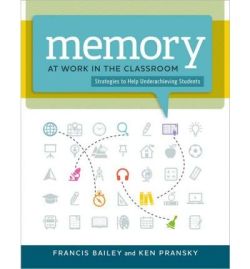Excerpted from Memory at Work in the Classroom: Strategies to Help Underachieving Students, by Francis Bailey and Ken Pransky. Bailey is the Director of the Teaching English as a Second Language Master's program at the University of Kentucky. Pransky is a teacher trainer and instructional coach through the Collaborative for Educational Services in Northampton, Mass.
While there is individual variation within any culture, cultural learning patterns form along continua of learning styles. In some cultures making errors in public is a huge social shame to be avoided at all cost, while in others, they are thought of mainly as fodder for more learning (even if no one likes making them). In some cultures, people tend to favor learning collaboratively, while in others, there's more of a focus on the individual. In some cultures, people like to build their wall of learning brick by brick, while in others, the bricks get sketched in as you think about the whole wall, or sections of it.
Ken once asked the Cambodian paraprofessional at his school, whom he relied on as a cultural informant, about why a lot of the Cambodian students seemed so shy about asking questions or giving opinions about academic topics even when encouraged to do so and even if not in front of the whole class. The para said that in Cambodian culture, children are just expected to learn the approved knowledge given to them by responsible adults, without question. For a Cambodian student to ask the teacher a question would mean one of two things: either they hadn't been paying attention well, which was bad; or they hadn't understood, which would be like telling the teacher, "You didn't explain it well enough, so take another stab at it," which would be horribly rude.
In a diverse classroom, we could imagine a student whose learning identity is passive until adult-directed, who has a low tolerance for errors, who expects to learn brick by brick, and who is not proactive about posing questions (either to the teacher or within him- or herself). How would that student look to us in our classroom? Maybe as a "slow learner" who has "special needs"?





